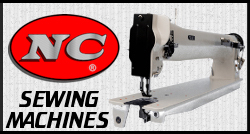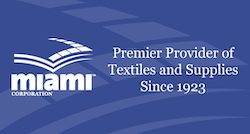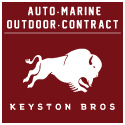-
 Jason DePinto
5Been wondering how everyone prefers to pattern their pieces. In school, they taught us to draw lines on the seat, then pin or glue scrap vinyl down. Then go around peeling up the vinyl and transferring the line underneath. This is how I've always done it. I've seen some people use clear vinyl, even someone who puts down masking tape, draws lines, cuts the tape on the lines, and adds the selvedge.
Jason DePinto
5Been wondering how everyone prefers to pattern their pieces. In school, they taught us to draw lines on the seat, then pin or glue scrap vinyl down. Then go around peeling up the vinyl and transferring the line underneath. This is how I've always done it. I've seen some people use clear vinyl, even someone who puts down masking tape, draws lines, cuts the tape on the lines, and adds the selvedge.
What's your preferred method? -
Wayne Munro
2I was taught to pin the material to the seat and chalk on the edge or crown of a curve (be sure to add your alinement marks). Add your selvedge and cut it out. -
 Eric Gordon
41I find template patterning material works best. It's available on 6 ft x 100 yard rolls. Its somewhat clear but doesn't stretch or distort . Use a light mist adhesive to hold. I draw guide lines and designs on it with a china marker . The pattern can be saved for future projects.
Eric Gordon
41I find template patterning material works best. It's available on 6 ft x 100 yard rolls. Its somewhat clear but doesn't stretch or distort . Use a light mist adhesive to hold. I draw guide lines and designs on it with a china marker . The pattern can be saved for future projects. -
 Clinton Morton
5I’ve always used that template perfect that doesn’t stretch but have since moved to the light gauge clear plastic and like that best.
Clinton Morton
5I’ve always used that template perfect that doesn’t stretch but have since moved to the light gauge clear plastic and like that best. -
 Phillip Aldridge
4Self taught here, but I learned to do it the way Wayne described. I put pins in the panels and make my pattern that way, especially for the custom jobs I get from time to time.
Phillip Aldridge
4Self taught here, but I learned to do it the way Wayne described. I put pins in the panels and make my pattern that way, especially for the custom jobs I get from time to time. -
 Cesar Chavez
15Normally, by using a pen, I first draw the required design on the cushion foam. The patterns I would get would be with the real measures I already marked on the foam. I use two ways of patterning. One is by using 'stationery cardboard' in case of '2D flat designs', but if I have to pattern '3D irregular designs' I'd rather use 'stretchy vinyl'.
Cesar Chavez
15Normally, by using a pen, I first draw the required design on the cushion foam. The patterns I would get would be with the real measures I already marked on the foam. I use two ways of patterning. One is by using 'stationery cardboard' in case of '2D flat designs', but if I have to pattern '3D irregular designs' I'd rather use 'stretchy vinyl'.
In both cases to keep them steady attached to the foam I use upholstery pins or some points of yellow glue. All of the patterns should match one in front of the other and I should not forget to mark where is necessary the 'alignment marks or notches'.
Why do I use 'stretchy vinyl' as a second option?
I use it in case of rounded areas, so I could stretch a little the material and pin there to not let it move. At the time of sewing procedure, I would stretch the material a little to make the 'notches' meet one in front of the other.
After having these 'real measures molds', is time to transfer them to 'real material (vinyl, leather, fabric, etc.)' not forgetting to add the 'seam allowance' that could be no less than 1 cm or 1/2 of an inch.
If i want to preserve these mold for similar jobs, I could transfer them to a 'thicker cardboard or thin sheet of metal'.
If more sophisticated, in case of laser cutting machines, I would transfer them to a computer.
I also have used in the past, the way of attaching the material to the seat by using upholstery pins and, directly mark with a tailor chalk or waxed pencil on the material giving it the required seam allowance. This method is valid but not so precise. -
 Michael McKean
5I mark out the desired design on the foam and then pin clear vinyl on. My wife gets specials and coupons emailed to her from Joann fabrics. Every few weeks she'll get one for 60 or 75 % off 1 item. I'll use that and buy a whole role. Comes out much cheaper than any of my suppliers
Michael McKean
5I mark out the desired design on the foam and then pin clear vinyl on. My wife gets specials and coupons emailed to her from Joann fabrics. Every few weeks she'll get one for 60 or 75 % off 1 item. I'll use that and buy a whole role. Comes out much cheaper than any of my suppliers -
 Jan Pokorny
2I use a transparent plastic foils in which suppliers send me the material - it works well, it's thin so it can be archived in office files ... and it's free, I don't have to buy it anywhere (and I recycle - I save nature ;-) )
Jan Pokorny
2I use a transparent plastic foils in which suppliers send me the material - it works well, it's thin so it can be archived in office files ... and it's free, I don't have to buy it anywhere (and I recycle - I save nature ;-) ) -
 Michael cullen
6I use calico usually depending on the job but you guys have given me some extra ideas
Michael cullen
6I use calico usually depending on the job but you guys have given me some extra ideas -
 Naseem Muaddi
38I use the actual material I'm upholstering the seat with and pin it on the very edges but if I need to pin the material anywhere other than on the selvage I'll use scrap vinyl for patterning.
Naseem Muaddi
38I use the actual material I'm upholstering the seat with and pin it on the very edges but if I need to pin the material anywhere other than on the selvage I'll use scrap vinyl for patterning. -
 Jean Luc Chanay
4I use differents material/methode, depending on what I have to pattern.
Jean Luc Chanay
4I use differents material/methode, depending on what I have to pattern.
On motorcycle seats, I generaly use tape to save time.
On car seats, I use transparent plastic that I lighttly glue to hold.
I use calico on convertible top.
JL -
 Adam Gabriel
16typically buy a huge roll of 4mil plastic from lowes or home depot. works good for patterning wide carpets for boats (over 10' beams)
Adam Gabriel
16typically buy a huge roll of 4mil plastic from lowes or home depot. works good for patterning wide carpets for boats (over 10' beams) -
 Andy Laird
43Ditto the plastic. I actually do 95% of my patterning with 1.5mil clear plastic. I know it's not for everyone but it works well for me. If anyone is interested I'll do a how to pattern with plastic. Just let me know.
Andy Laird
43Ditto the plastic. I actually do 95% of my patterning with 1.5mil clear plastic. I know it's not for everyone but it works well for me. If anyone is interested I'll do a how to pattern with plastic. Just let me know. -
 William Duffy
13It is always great to see how someone else does a particular procedure. It is the point of this forum, I believe, to share and educate. I am looking forward to your tutorial.
William Duffy
13It is always great to see how someone else does a particular procedure. It is the point of this forum, I believe, to share and educate. I am looking forward to your tutorial. -
 Garrett Bateman
1I've been trying to learn how to pattern from scratch and im having having a very hard time. I've tried different materials and techniques and maybe I'm making it harder than it should be but i just can't seem to get the results I'm looking for. My problem areas are anything round lol. I feel so confident each time I start and then things just start to spiral out of control. Would someone be willing to break this down even farther for me?
Garrett Bateman
1I've been trying to learn how to pattern from scratch and im having having a very hard time. I've tried different materials and techniques and maybe I'm making it harder than it should be but i just can't seem to get the results I'm looking for. My problem areas are anything round lol. I feel so confident each time I start and then things just start to spiral out of control. Would someone be willing to break this down even farther for me? -
 Eric Gordon
41Sure Garrett, I'd be happy to help. I generally use template pattern plastic. Lightly glue in place, mark the sewing seam with a china marker, make guide marks to align the insert / bolster with the facing. Allow 3/8" for sewing when transferring onto material . If you can explain where you are running into problems , I can address that issue.
Eric Gordon
41Sure Garrett, I'd be happy to help. I generally use template pattern plastic. Lightly glue in place, mark the sewing seam with a china marker, make guide marks to align the insert / bolster with the facing. Allow 3/8" for sewing when transferring onto material . If you can explain where you are running into problems , I can address that issue. -
 Joel W Larkin
0You can also use screen material like you having your windows or screen door. Put black marker lines to design you want spray some of the Kingston tack glue and lay it on their .stretches fine looks good you could transfer the lines and patterns . Very workable
Joel W Larkin
0You can also use screen material like you having your windows or screen door. Put black marker lines to design you want spray some of the Kingston tack glue and lay it on their .stretches fine looks good you could transfer the lines and patterns . Very workable -
 Steve Ingram
36Garrett, I would be happy to help with any questions. it could be something you are doing in cutting or sewing the actual cover also.
Steve Ingram
36Garrett, I would be happy to help with any questions. it could be something you are doing in cutting or sewing the actual cover also. -
 Andy Laird
43Sorry I have not done that yet. I'll see if I can work that in soon, I've just been super busy.
Andy Laird
43Sorry I have not done that yet. I'll see if I can work that in soon, I've just been super busy. -
 anthony simpson
3when you say somewhat clear.. what do you mean? If i draw on the foam with black marker can you see through it to trace your previous marked patterns clearly? I've been using Press & Seal seran wrap because of the tacky backing but i'm looking for something with the same characteristics but in a more industrial form
anthony simpson
3when you say somewhat clear.. what do you mean? If i draw on the foam with black marker can you see through it to trace your previous marked patterns clearly? I've been using Press & Seal seran wrap because of the tacky backing but i'm looking for something with the same characteristics but in a more industrial form -
 anthony simpson
3I'm intersted in your technic. I've been using " Press & Seal" seran wrap because of the tacky backing but i'm looking for something with the same charcteristics but industrial form.
anthony simpson
3I'm intersted in your technic. I've been using " Press & Seal" seran wrap because of the tacky backing but i'm looking for something with the same charcteristics but industrial form. -
Jesse Durkee
19Sorry to bring up a dead thread. But have you tried carpet shield? I just picked some up for moving and it would seem to be a better option. -
 John Woolfrey
2At 3:00 they use an adhesive backed clear plastic sheet. Does anyone know of such a product? Looks to be about a yard wide with a white wax paper backing you peel off.
John Woolfrey
2At 3:00 they use an adhesive backed clear plastic sheet. Does anyone know of such a product? Looks to be about a yard wide with a white wax paper backing you peel off.
https://youtu.be/U-tWSyK0EXw?t=180 -
 Justin L Rash
9Honestly you’d be surprised what you can find from a warehouse supplying sign shops in your area. I have one 2 miles away I worked at years ago before getting into upholstery. They use all kinds of products adhesive backed we could use for patterning on different applications. I buy a lot of PVC foam board and HDPE King Starboard for marine applications thru this warehouse.
Justin L Rash
9Honestly you’d be surprised what you can find from a warehouse supplying sign shops in your area. I have one 2 miles away I worked at years ago before getting into upholstery. They use all kinds of products adhesive backed we could use for patterning on different applications. I buy a lot of PVC foam board and HDPE King Starboard for marine applications thru this warehouse. -
 David Hawkins
1Transfer paper from a sign shop has a sticky back comes in various widths and clear or white
David Hawkins
1Transfer paper from a sign shop has a sticky back comes in various widths and clear or white
Welcome to The Hog Ring!
This forum is only for auto upholstery pros, apprentices and students. Join today to start chatting.








- Terms of Service
- Useful Hints and Tips
- Sign In
- Created with PlushForums
- © 2025 The Hog Ring























